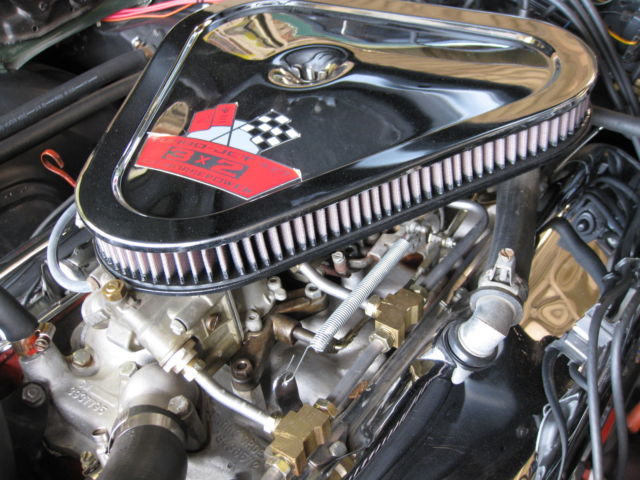

The car ran quicker than that by a few hundredths on its first time out, and John and I were just full of ourselves. We yanked the Muncie from my 1957 Bel Air daily transportation to go to Englishtown on the opening day of the 1971 season, aching to test ourselves against the national record of 13.60 seconds. After punching the block out 0.030-inch and increasing its displacement to 402-cid back in 1970, a. The body was prepped at the Mackey family's Gulf station. The Chevrolet 396-cid, big-blocks destiny was decided long ago. The tops got milled flat as the rules required, and an extra groove for a narrow ring-compression ring was added above the existing top groove. See all 11 photos 11 photos Back in the August 1985 issue of Super Chevy, we featured the NHRA C/Stock record holder-Jim Hughes' 10.90 e.t. Rather than expensive aftermarket pistons from California, Truppi ordered a set of over-the-counter TRW dome models intended for a fuel-injected 283. It was a project done on a budget extreme, yet it included all the Truppi-Kling engine tricks that were, it turned out, perfectly legal by the NHRA's judgment. I was a hard-headed know-it-all, but under the guidance of these teachers, Mackey and I pressed ahead with building the Chevelle wagon anyway.

We'd decided on an O/Stock 1965 Chevelle wagon - 283 cubes, 220 horses - but Truppi tried endlessly to talk me into finding a more creative combination. In my senior year at Rutgers, I built my first car with high school buddy John Mackey. Most any of the combinations for the 69 Camaro can be run with a 4 speed, and you can put complete new Jerico set up in for under 7K. It also greatly reduces the odds of getting a heads up run against a car you cant beat. The full facts remain hazy, but there's no doubt the Superbird violated at least some of the rules.īeing an eyewitness to much of the SS/EA Chevelle's creation hardly doused my own desire to race. However, the 4 speed is pretty cool, fun to drive, and low maintenance. Stories of the ringer Superbird have varied through the years - there was talk of a factory-prepped, 512-cube engine, staggered wheels for greater rollout on the starting line, relocated engine, and illegal ballast at the rear. 5 & 50), intended to take out Ray Allen and the Jersey threat in an early round, then redlight to avoid a trip to the teardown barn. But a different Chrysler contingency emerged: a ringer in the form of a Hemi Plymouth Superbird, driven by contract racer, Jack Werst (Mr. A challenge of the Chevelle's production status - the NHRA technical director told the team it couldn't run because such cars were not available - was easily enough turned back when the NHRA announcer showed up at the track with a borrowed LS6 convertible. Local wins and strong performances brought wide attention, including factory race group at Chrysler, which mounted a major effort to keep it from winning the U.S.


 0 kommentar(er)
0 kommentar(er)
